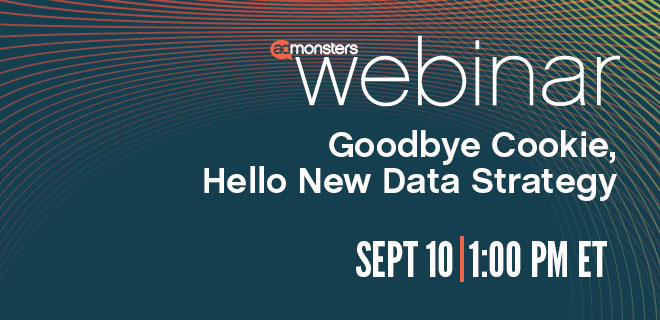
While identity has emerged as a major contender in race to replace the third-party cookie, conversations at the PubForum Virtual (Aug. 25-26, 2020) showed us that many pubs don’t think it will be the one true cookie alternative. For a variety of reasons, publishers are expecting to face the cookieless world with a variety of solutions—potentially identity (if they have enough authenticated traffic) and likely a rejuvenated first-party data strategy.
Certainly Permutive is not betting on identity dominating the future of data-driven advertising. In chatting with TechCrunch about its recent $18.5 million funding hall, CEO and cofounder Joe Root came out and said Permutive is committed to “the destruction of identity in the adtech ecosystem.”
The edge-computing-based DMP’s big play is publisher first-party data, and the company boasts bold success stories such as Digital Trends, which will share the tale behind its next-gen first-party data marketplace during a free AdMonsters webinar on Sept. 10 at 1 pm ET.
To dive deeper into Permutive’s views on identity and what’s different about the new crop of publisher first-party data marketplaces, we threw some questions to Product Marketing Manager Aphrodite Brinsmead.
GAVIN DUNAWAY: Permutive is taking a stand against the portability of user data across devices and applications. It’s arguable that identity is a straight-up third-party cookie replacement, but this is how buyers have coordinated to buy media. How will publishers get notoriously sticky buyers to change their ways?
 APHRODITE BRINSMEAD: The challenge with the way identity has been used for advertising over the last decade is that it doesn’t respect user privacy or provide any visibility into what happens to that data. This is why Apple and Google are making changes to their browsers.
APHRODITE BRINSMEAD: The challenge with the way identity has been used for advertising over the last decade is that it doesn’t respect user privacy or provide any visibility into what happens to that data. This is why Apple and Google are making changes to their browsers.
Third-party cookies have been a big focus because that was how user data was previously shared across sites. But browsers will adapt to stop any kind of unsafe identifier from being used in this way, meaning that at some point buyers will have no choice but to change their ways.
Before this happens, we’re helping publishers to educate buyers about the challenges with tracking users across sites and about the value of first-party data. We don’t see identity for advertising completely disappearing, but we see it being put back in the hands of publishers.
Once third-party cookies are blocked, there will be two types of users: those that are authenticated and have given permission for their data to be used for advertising, and anonymous users who choose not to log in. Publishers have relationships with both types of users and access to data on all of them, whether its declared subscriber data or behavioral and intent data. Publishers should be collecting as much valuable first-party data as possible to show that they have unique, scaled audiences for buyers.
We’ve already seen our publishers proving to buyers that first-party data is just as valuable, if not more than third-party data. For example, Insider Inc. worked with a financial advertiser to test the effectiveness of targeting with first- versus third-party data. It found that the first-party data segment outperformed the third-party segment. The change for buyers might be gradual but it’s already starting to happen.
GD: First-party data marketplaces are not a new concept, but publishers have long cultivated their data only to see advertisers shrug. How can publishers get the scale for their first-party data marketplaces that will lure in advertisers—especially through programmatic?
AB: We see this as a massive opportunity and are working with publishers everyday to move the needle forward. Of course there’s a lot of onus on publishers to adapt as well. They need to work more closely together, create a common taxonomy and really focus on building their first-party data strategies so that they are prepared to scale their audiences without third-party data.
They also need to form better relationships with advertisers and start building trust now. In order to partner more closely with advertisers, publishers need to show that they can scale campaigns and deliver results, without relying on third-party data.
If they can achieve this, then there is a real chance for first-party data marketplaces to succeed. We’ve already seen publishers achieve this with new first-party data tools, such as Insider Inc.’s SÁGA and Mail Metro Media’s D.N.A. (Data News Audiences). (Also Digital Trends, who will share how they forged a brand new first-party data strategy at our AdMonsters Webinar on Sept. 10 at 1 pm ET.)
GD: Especially with all the hubbub around the Privacy Sandbox, there are ever more concerns about browsers putting the kibbutz on audience tools publishers need. How do you ensure clients that Permutive is here for the long haul?
AB: One of the most exciting things about digital advertising is that it’s constantly evolving. And the current evolution is rightfully around privacy, Permutive’s number one priority.
We have a laser focus on helping publishers grow their advertising revenues, while remaining privacy compliant and are determined to succeed in that mission. We’ve already seen a lot of success globally, are expanding our team and want to continue on that trajectory.
We have ambitious plans to keep growing our client base and innovating our products to stay ahead of market changes. Although we’re smaller than some of our competitors (for now!) that just means we’re able to adapt our solutions faster and tailor our services to publishers’ requirements.
Watch this space for some big product announcements later this year!
And be sure to join AdMonsters Webinar on Sept. 10 at 1 pm ET to hear how Digital Trends built out its first-party data marketplaces.